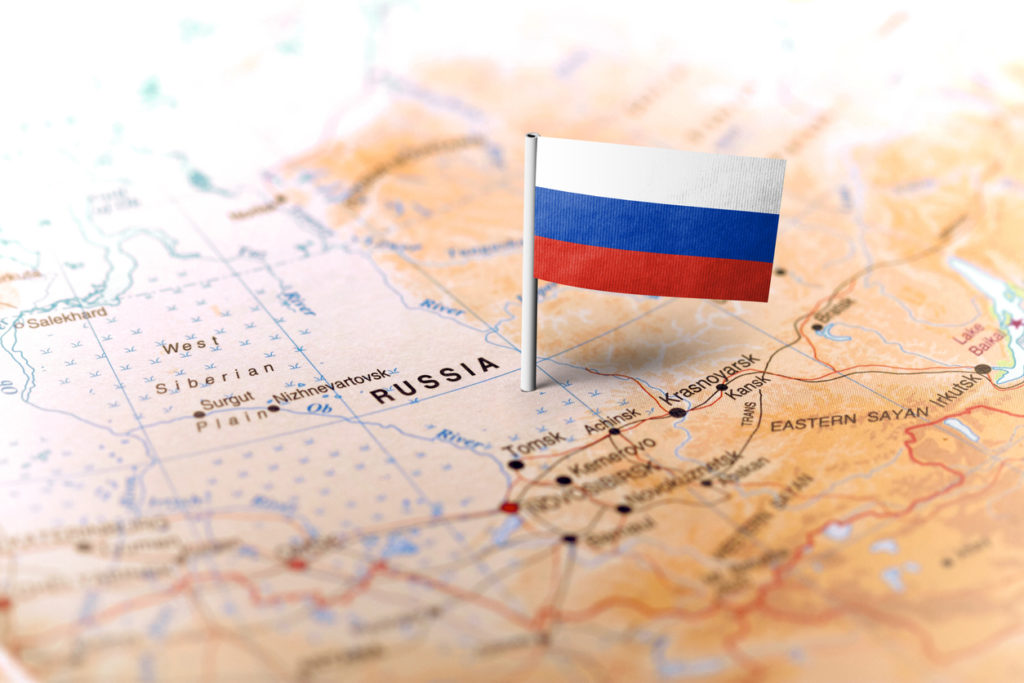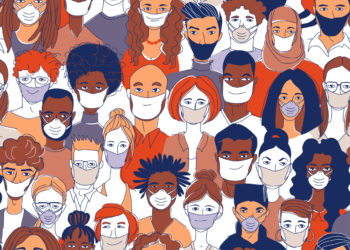Thousands of Russian scholars were happy to receive good news in 2020: their articles were accepted for publication in international journals. However, such joy can hardly be sustained because many of the papers were, in fact, published in predatory or hijacked journals with poor or even no peer review, according to my estimate based on a list of deceptive journals created by the Russian Academy of Sciences in 2020. This list tracks deceptive and dishonest behaviors including purchased author credentials, plagiarism, and false claims of peer review. Many of the journals on this list had been dropped from Scopus and Web of Science by the end of 2020.

New regulatory framework and publications in predatory journals
Publication by Russian scholars in predatory journals has increased significantly since 2011-2012, when new nationwide criteria for the evaluation of research output were introduced (see http://government.ru/docs/9282/, https://rg.ru/2012/05/09/nauka-dok.html, http://government.ru/docs/3346/). Among others, these criteria included quantitative indicators like publications and citations in journals indexed in international databases such as Scopus and Web of Science. In response, Russian universities introduced new promotion criteria and financial incentives for faculty. This has had positive effects on Russian academics’ integration into the international research market, but has also created an incentive for fraudulent behavior, especially in social sciences, humanities, and medicine. According to one estimate, Russian scholars published approximately 5,000 articles in predatory journals in 2018 and 4,300 in 2019.
Co-authorship for sale
The appearance of a specific industry for selling authorship credentials may also have been caused by these new policies. The increased pressure to publish appears to have led Russian academics to buy “authorship” in thousands of articles from one of dozens of paper mills that sell co-authorship credit. International Publisher LLC is one of the largest companies on the market and offers scholars the chance to buy co-authorship in hundreds of articles boldly posted on their website. As of December 2020, the site was offering 633 articles with co-authorship slots for sale, mostly in economics, education, law, engineering, medicine, and agriculture. On its website, this company claims that more than 4,000 articles with dishonest co-authorship credits have been published with its assistance over the last five years. This company has also expanded abroad and sells co-authorships to scholars from Ukraine, Kazakhstan, Azerbaijan, China, UAE, United States, Serbia, Colombia, Vietnam, etc., and a fraudulent author can even choose an article co-authored by a scholar from a certain country.
Some of these transactions can be traced online. For example, article #73 listed on the website 123mi.ru by “International publisher” in March 2019 with the title “Cardiovascular disease risk factors assessment in rural people” offered three co-authorships available for sale. The site indicates that this article was to be submitted to a Venezuelan journal and indexed in Scopus. Sure enough, a search in Scopus yields an almost exact match: the article “Cardiovascular risk assessment among rural population in Russian Federation: A case study of Irkutsk region” was published in the Venezuelan journal Revista Latinoamericana de Hipertension in 2019 and is credited to three Russian researchers (see Figure 1).

Another example is the article titled “Globalization processes in the economies of Kazakhstan and China” with five co-authorships for sale. This article was to be submitted to an Iranian journal specializing in business, management, and marketing. And again, one may now find in Scopus an article with the title “Globalization in the Economies of Kazakhstan and China” published in the Iranian journal International Journal of Management and Business Research in 2019 and “authored” by five Russian researchers (see Figure 2).

Prices for “co-authorship” range from $1,300 to $6,200 per article, the cost of which is divided among the co-authors. Despite the high cost of having one’s name listed dishonestly as a co-author, fraudulent authors may come out ahead due to the financial bonuses offered by universities for publishing an article in one of the journals indexed in Scopus and Web of Science. Some universities have an interest in boosting (or at least turning a blind eye to) such behavior by their own faculty, because more publications can be converted into higher budget allocations. This situation has created a peculiar business model: paper mills and predatory journals receive a fee paid by a scholar who will be compensated by a financial bonus from their university, which in turn can rely on receiving higher budget transfers. One of the most controversial examples is Kazan Federal University, currently the leading Russian universities in predatory publication.
Translation plagiarism
Translation plagiarism (the practice of taking a research publication in another language, translating it into one’s own, and then presenting it as one’s original work) in predatory journals has been examined independently by the Commission for Counteracting the Falsification of Scientific Research of the Russian Academy of Sciences (RAS), which investigates unethical practices in Russian science. In August 2020, the RAS Commission released the results of its study in the report “Predatory Journals at Scopus and WoS: Translation Plagiarism from Russian Sources” which I co-authored. Using scientometric methods, the study discovered 94 predatory journals currently or previously indexed in the Web of Science or Scopus that were popular among Russian scholars. Some of the articles by Russian scholars published in these predatory journals have been checked for plagiarism. The authors of the report detected 259 papers with evidence of translation plagiarism from Russian into English: a total of 174 of these papers contained a word-to-word translation of published Russian texts without proper citation or acknowledgment of the authors. In 85 cases, gift co-authorship was detected; the texts were translated in English from already published articles in Russian journals, but the authors partially overlapped. Plagiarism cases involved top officials of Russian universities as well as lecturers and professors (see example in Figure 3). According to the RAS report, more than 1,100 Russian authors participated in such plagiarism cases.

Further investigations of translation plagiarism conducted by Dissernet, a network of researchers who investigate academic misconduct in PhD theses and scientific articles, of which I’m also a member, detected numerous cases of fraudulent publications in “hijacked journals”. A hijacked journal presents a fake website similar to a peer-reviewed journal and clones its title and ISSN to cheat scholars. Hijacked journals are created by cyber-criminals in order to fraudulently collect fees from authors for fast publication. Nearly 90 papers by Russian scholars have been published in the hijacked Journal of Talent Development and Excellence (a clone of Talent Development and Excellence) and ended up in Scopus, and six of them contained translation plagiarism.
Similar cases of academic misconduct were discovered in the hijacked Journal of Southwest Jiaotong University. This clone fraudulently published a number of papers by Russian scholars, and two of them contained translation plagiarism and gift co-authorship. Undoubtedly, hijacked journals mimic authentic publishers and cheat potential clients, but in these cases, paper mills are most likely cheating fraudulent authors by publishing papers in hijacked journals rather than promised legitimate ones.
The studies by RAS and Dissernet showed that the problem of co-authorship for sale and translation plagiarism are two sides of the same coin. The emergence of translation plagiarism is connected to the activity of paper mills: they tend to sell co-authorship in low-quality papers that are unlikely to be published in legitimate journals, so they submit such articles to predatory journals. Such broker companies also offer plagiarized texts for sale. This happens for several reasons: first, predatory journals do not provide genuine peer-review and are therefore unlikely to detect (or care about) the plagiarism. Second, the technical possibilities of identifying translated text similarities from Russian into English by editors are limited because most plagiarism detection software doesn’t identify plagiarism across this translation process. Thus, the low probability of detection makes it possible to save on text preparation costs.
Reaction of broker companies and the Ministry of Science and Higher Education
The investigations by the RAS Commission and Dissernet have allowed the academic community to identify fraudulent authors and their universities. The ability to trace the clients of paper mills has had an impact on the companies that facilitate these fraudulent practices. International Publisher has noticed changes in its clients and adjusted its strategy accordingly:
We also work with foreign authors who publish the articles in good Q1-Q2 journals. The process looks like this: an author with a high Hirsch index writes an article to submit in a quality journal; one place is assigned to him; the remaining 2-3 places in the article are for sale. The payment is divided between the journal, the author, and us. Such schemes cannot be traced, since there are only two sides, and each of them is interested in continuing cooperation.
They further add that “due to these changes, we will publish articles in good journals, creating the appearance of real work of the author of the article and the editor of the journal.” There is already evidence of the receipt of such letters by legitimate scholars.
This massive violation of academic ethics in international journals did not arise out of nowhere. Academic dishonesty spread in the 1990s – 2000s in PhD theses and research papers in Russia. To date, approximately 10,000 plagiarized dissertations have been discovered by Dissernet, as well as nearly 5,000 plagiarized articles. However, the widespread investigations of plagiarized publications in predatory journals has not led to significant dismissals from university posts.
My appeals to the Ministry of Science and Higher Education (to which most state universities are subject) regarding plagiarism in the PhD theses and scientific articles of rectors brought no results. In its response to my appeal regarding plagiarized articles, the Ministry argued its position in the following way:
Currently, the legislation of the Russian Federation does not prescribe the liability for the violation of ethical principles regulating the behaviour of editorial boards, editors, reviewers, publishers and authors in the field of scientific publications.
In the same response letter the Ministry noted that in 2020, it founded a scientific ethics commission to elaborate a set of rules of ethics for scientific publications.
The scale of misconduct is enormous, but it is not unique to Russia. Academic misconduct occurs to varying degrees in all countries. Perhaps in other countries, the volume is higher, but we do not know details about such figures because of the lack of systematic checks. The Russian case is unique because there are independent volunteers who are involved in regularly investigating academic misconduct — one of the reasons for the frightening amount of plagiarism is that it is actually being detected.
Discussion
1 Thought on "Guest Post — Unethical Practices in Research and Publishing: Evidence from Russia"
“the frightening amount of plagiarism is that it is actually being detected/” Impunity is the problem. For example, in 2016 the Russian scholars discovered large scale plagiarism in Ekaterina Torkunova ‘s Ph.D. dissertation. She is a faculty of prestigious MGIMO university and daughter of MGIMO’s rector (president) Anatoly Torkunov. Was there any reaction from the university administration or faculty of MGIMO or other universities? None – rather she got a promotion. ( the “Dissernet” has analyzed her dissertation)



